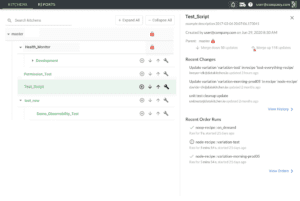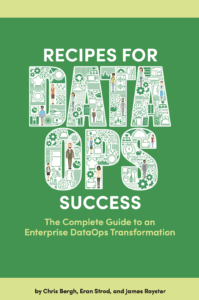The technical architecture that powers steaming analytics enables terabytes of data to flow through the enterprise’s data pipelines. Real-time analytics require real-time updates to data. To that end, data must be continuously integrated, cleaned, preprocessed, transformed and loaded in a data warehouse or other database that is architected to meet the required response time and load.
IDC predicts that the total amount of data worldwide will grow to 175 Zettabytes by 2025 – that’s 10X growth in the past several years. Nearly 30% of the world’s data will need real-time processing. From our daily conversations with leaders of data teams and organizations, we find that many enterprises are scrambling to prepare. Streaming analytics will need to use a management method called DataOps to cope with the data tsunami. DataOps will help enterprises overcome four major challenges in streaming analytics.
Challenge #1: Data Errors
Data is notoriously dirty. Terabytes of data flow through the enterprise continuously. If one wrong value enters the data pipeline, it could corrupt analytics. You wouldn’t want a machine-learning algorithm to send snow shovels to Arizona because your weather data supplier expressed the temperature in centigrade. That may be a silly example, but a real error might be subtle and extremely difficult to catch, given the sheer quantity of data that a typical enterprise consumes.
DataOps orchestrates tests across all data pipelines to catch errors before they reach analytics. Every processing and transformation stage of the enterprise’s numerous data pipelines are validated using input, output and business logic tests. If an error occurs, the data team is alerted. If the error is critical, the data pipeline temporarily stops, so the problem can be investigated. Catching these errors as early as possible is an effective way to reduce unplanned work and avoid displaying inaccurate data to users.
Challenge #2: Event-Driven Processing
DataOps orchestration can also automate event-driven processing typical of streaming applications. The testing and filtering of data in DataOps provides transparency into real-time data streams. Tests, filters and orchestrations can be linked to messages and streaming events.
Challenge #3: Manual Processes
Data scientists are a precious and expensive resource. Yet, they spend the majority of their time executing manual steps to prepare and process data. DataOps automates the flow of data from data sources to published analytics. In a DataOps enterprise, automated orchestration extracts data from critical operational systems and loads it into a data lake, under the control of the data team. To comply with data governance, data can be deidentified or filtered. The orchestration engine then preps the data and transfers it into centralized data warehouses and makes it available to self-service tools for decentralized analysis. Without manual processes, data can flow continuously, efficiently and robustly. Data scientists are freed to create new analytics that drive growth.
Challenge #4: Cycle Time
Most organizations suffer from an unacceptably lengthy cycle time, i.e., the time that it takes to turn an idea into production analytics. For example, many organizations report to us that it takes them months to make a simple change. DataOps uses virtual workspaces to ease the transition from development to production and it borrows from DevOps (orchestrated tests and deployment/delivery) to reduce cycle time from months/weeks to days/hours.
Conclusion
DataOps brings the IT team, data engineers, data scientists and business users together into a coherent set of workflows. It automates data operations and enforces data filters that catch errors in real-time. It reduces cycle time by minimizing unplanned work and creating a continuous delivery framework.
The transformation of raw data to analytics insights has become a point of differentiation among enterprises. Tomorrow’s best-run organizations will attain market leadership on a foundation of efficient and robust management of data. Coping with massive amounts of data will require everyone working together and using DataOps automation to enforce data quality, parallel development and the fastest possible cycle time.






